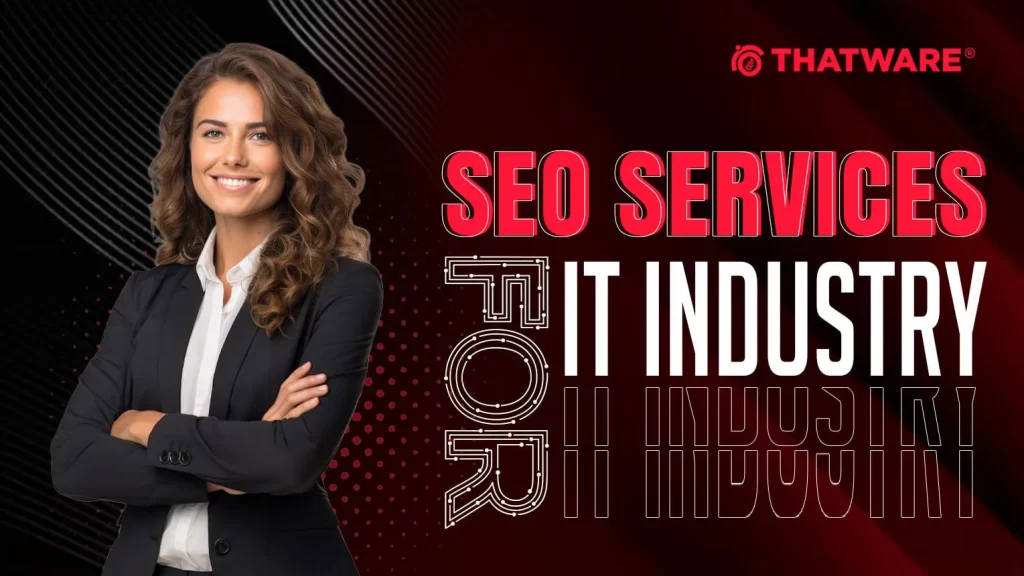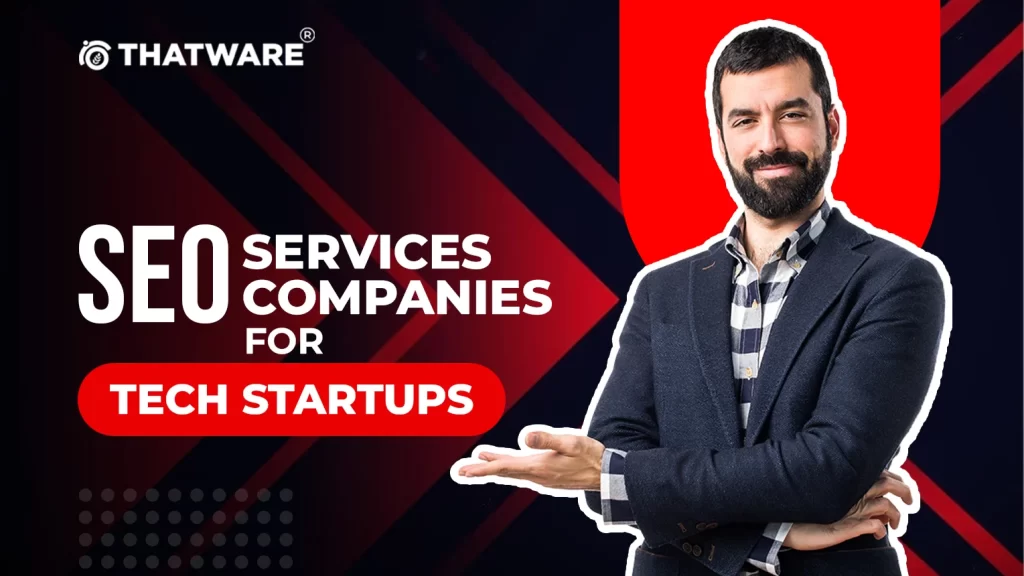In the digital realm where visibility is paramount, mastering Software SEO becomes the cornerstone for success in Software Companies, IT Industries, and IT Sector Firms. As these sectors navigate the intricacies of the online landscape, a strategic approach to search engine optimization is not just a choice but a necessity. This article unveils the essential strategies and tactics tailored for the dynamic IT industry, guiding businesses toward unlocking unparalleled online visibility, attracting qualified leads, and ensuring sustained growth in the competitive digital sphere. Join us on a journey to unravel the nuances of Software SEO and harness its transformative power for your IT excellence.

The Dynamic SEO Landscape for Software and IT
In the ever-evolving digital landscape, where innovation and competition coalesce, the significance of a robust SEO strategy for Software Companies, IT Industries, and IT Sector Firms cannot be overstated. As we delve into the dynamic SEO landscape specific to these sectors, it’s essential to recognize the unique challenges and opportunities that characterize the IT industry. Unlike traditional markets, the IT sector operates on the cutting edge of technology, constantly pushing boundaries and redefining norms. This dynamism extends to the digital realm, where staying ahead requires more than just a cursory understanding of search engine optimization.
The Competitive Imperative:
At the heart of the dynamic SEO landscape lies an inherent need for businesses in the software and IT sectors to stand out amidst intense competition. With an abundance of software companies vying for attention, effective SEO becomes a strategic imperative for carving a distinctive online presence. The sheer diversity within the IT industry, spanning software development, IT consulting, and enterprise solutions, amplifies the need for specialized SEO approaches tailored to each niche. Understanding the competitive landscape is not merely an option; it’s a prerequisite for devising SEO strategies that resonate with target audiences and outpace competitors.
Navigating Technological Trends:
In the IT sector, where technological trends shape business trajectories, SEO strategies must align with the industry’s ever-evolving landscape. From artificial intelligence and blockchain to cloud computing and cybersecurity, each technological trend introduces new dimensions to the SEO equation. Successful navigation of these trends requires a profound understanding of the language used by the industry and an ability to anticipate how users search for information within these domains. As Software SEO practitioners, staying abreast of emerging technologies is not just beneficial but foundational to crafting strategies that capture the attention of tech-savvy audiences.
User Intent and Content Dynamics:
User intent is a driving force in IT industry SEO, understanding the intricate needs of businesses and professionals is paramount. Beyond generic searches, users within the IT industry often seek highly specialized information, from coding best practices to the latest advancements in software testing methodologies. Tailoring content to meet these specific needs requires a nuanced understanding of the industry’s intricacies. Successful Software SEO hinges on the creation of content that not only aligns with the technical expertise of the audience but also anticipates and addresses their pain points and aspirations.
Global Reach and Local Relevance:
While the IT sector operates on a global scale, businesses within this domain often have a local presence or cater to specific regional markets. This dual nature necessitates a multifaceted SEO approach that balances global reach with local relevance. Local SEO strategies, such as optimizing for local search terms and building geographically targeted backlinks, become instrumental for IT companies with a regional focus. Simultaneously, the global nature of the IT sector demands a broader SEO framework that ensures visibility in international search results and reaches a diverse, global audience.
Adapting to Algorithmic Dynamics:
Search engine algorithms, the invisible engines that power online discoverability, are in a perpetual state of evolution. In the IT sector, where algorithms determine the visibility of software products, IT services, and technology solutions, adapting to algorithmic dynamics is a continuous process. This involves staying attuned to major algorithm updates, understanding their implications on search rankings, and swiftly adjusting SEO strategies accordingly. Whether it’s Google’s core updates or industry-specific algorithm changes, Software SEO experts must be agile in their approach to maintain and enhance online visibility.
The Synergy of Paid and Organic Strategies:
In a competitive field like the IT sector, a comprehensive SEO strategy goes beyond organic tactics; it embraces the synergy of paid and organic strategies. Paid search advertising, when strategically integrated with organic SEO efforts, can amplify visibility and expedite results. This symbiotic relationship is particularly pertinent in industries where immediate visibility can make a substantial difference. Balancing paid campaigns with a strong organic foundation ensures a holistic approach that maximizes exposure, drives targeted traffic, and optimizes return on investment.
Essential SEO Tactics Tailored for Software Companies
In the rapidly evolving digital landscape where visibility is synonymous with success, Software Companies find themselves navigating a complex SEO terrain. The digital realm is saturated with competition, and effective search engine optimization is not just a strategy but a lifeline for these tech-centric enterprises. To master the intricacies of Software SEO, businesses need to deploy a set of essential tactics that go beyond generic approaches. Let’s delve into these tailored SEO tactics designed to propel Software Companies into the digital spotlight.
1. Competitor Research and Analysis:
The first cornerstone of effective Software SEO is a thorough understanding of the competitive landscape. Software Companies operate in a field where innovation is constant, and staying ahead of the curve requires insights into what competitors are doing right. By conducting in-depth competitor research, businesses can identify strengths, weaknesses, and strategic opportunities. Manual searches for industry-specific terms and key metrics analysis unveil gaps and untapped potentials, guiding the formulation of a SEO strategy that not only matches industry standards but surpasses them.
2. Strategic Keyword Planning:
Keywords are the currency of SEO, and for Software Companies, strategic keyword planning is a linchpin of success. Beyond the obvious keywords related to software and IT, businesses need to delve into the nuances of their industry. What terms resonate with their target audience? What are the alternative ways users might search for their products or services? By understanding the language of their audience and developing a comprehensive keyword strategy, Software Companies can ensure that their content aligns seamlessly with user intent and industry-specific queries.
3. Content Optimization:
In the realm of SEO for Software Companies, content is king. From homepage messaging to detailed product pages, every piece of content should not only convey information, but also be optimized for search engines. This involves more than just sprinkling keywords; it’s about creating valuable, relevant, and engaging content that speaks directly to the needs of the target audience. Beyond the conventional pages, investing in a blog is a powerful tactic. Regularly updated, insightful blog posts not only keep the audience informed but also contribute significantly to SEO rankings.
4. Metadata Writing:
Often overlooked but immensely powerful, metadata plays a pivotal role in Software SEO. Metadata, including meta titles and descriptions, serves as the first interaction users have with a webpage on search engine results pages (SERPs). Utilizing insights from strategic keyword planning, Software Companies can craft compelling metadata that not only communicates the essence of the page but also entices users to click through. Implementing metadata optimization across key pages ensures that the website is not only visible but also inviting to potential users.
5. Building High-Quality Links:
In the world of SEO, link building remains a stalwart strategy, and for Software Companies, it’s a game-changer. Google considers backlinks as a vote of confidence, and acquiring high-quality, relevant backlinks is crucial for establishing authority in the software domain. Unlinked mentions are opportunities waiting to be tapped—identifying instances where the company is mentioned without a corresponding link and reaching out to secure credit can significantly boost the backlink profile. Additionally, strategic guest posting and local link building, tailored to the software industry, can further enhance the link portfolio.
6. Site Speed Improvements:
Site speed isn’t just a user experience metric; it’s a critical SEO factor. In the fast-paced digital age, where attention spans are fleeting, a slow-loading website can lead to high bounce rates. For Software Companies, where the target audience is often tech-savvy and expects seamless experiences, site speed is paramount. Optimizing images, leveraging browser caching, and investing in a robust hosting infrastructure are among the various improvements that can drastically enhance site speed. Google’s emphasis on mobile-first indexing makes this facet of SEO even more critical.
7. Mobile-Friendliness:
As mobile devices become the primary means of accessing the internet, Software Companies cannot afford to neglect mobile optimization. A mobile-friendly website isn’t just a user preference; it’s a decisive factor in search engine rankings. According to industry reports, a significant percentage of internet users, especially in the software and tech space, access information through mobile devices. Ensuring that the website is responsive, with seamless navigation and optimal display on various devices, is not just a best practice; it’s a prerequisite for sustained online visibility.
8. Goal and Lead Source Tracking:
In the realm of SEO, setting goals and tracking lead sources is the compass that guides strategy. For Software Companies, aligning SEO efforts with business objectives is critical. Monthly reporting, an integral part of effective SEO management, provides insights into the performance of various strategies. As fervent advocates of HubSpot, we recommend this CRM software for its robust features in goal tracking and lead management. By utilizing data-driven insights, Software Companies can fine-tune their SEO approach, ensuring that every effort contributes to tangible business outcomes.

Four Types of SEO Illuminated in the IT Sector
In the intricate landscape of the Information Technology (IT) sector, where innovation is the norm and competition is fierce, understanding the nuances of different types of SEO is paramount. Search Engine Optimization (SEO) isn’t a one-size-fits-all endeavour, and for businesses operating in the diverse realms of software development, IT consulting, enterprise solutions, and more, a tailored approach is essential. Let’s illuminate the four key types of SEO that take centre stage in the IT sector, each playing a distinct role in shaping online visibility and success.
1. Technical SEO:
At the foundation of effective SEO in the IT sector lies Technical SEO, a discipline that often operates behind the scenes but holds immense power in determining a website’s performance. Technical SEO involves optimizing the technical aspects of a website to enhance its visibility on search engines. In the IT sector, where complex systems and cutting-edge technologies are the norm, technical considerations such as page load time, schema code implementation, and proper Google Analytics tracking become crucial.
Page load time, in particular, is a critical factor, influencing not only user experience but also search engine rankings. Slow-loading pages can result in higher bounce rates, affecting a website’s overall performance. In a sector where immediacy and efficiency are highly valued, optimizing for swift page loading becomes a strategic imperative.
Schema markup, another facet of Technical SEO, helps search engines understand the content on a webpage better. For IT companies offering intricate services or products, implementing schema markup can enhance the visibility of rich snippets in search results, providing users with more context and increasing click-through rates.
Ensuring proper Google Analytics tracking is in place allows IT businesses to gather invaluable insights into user behaviour, engagement, and the performance of various pages. By deciphering this data, businesses can refine their SEO strategies, ensuring that they align with user preferences and industry trends.
2. On-Page SEO:
On-Page SEO is the art of optimizing individual pages to rank higher and earn more relevant traffic. In the IT sector, where intricate details matter and precision is key, on-page tactics play a crucial role in conveying the expertise and value of the offered products or services.
Keyword optimization, a fundamental aspect of on-page SEO, involves strategically incorporating relevant keywords into the page content. For IT companies, this means aligning keywords with industry-specific terms and the language used by the target audience. By understanding the phrases, potential customers use when searching for IT solutions, businesses can tailor their content to precisely match user intent.
Optimizing page copy involves creating content that not only appeals to search engines but also provides value to users. In the IT sector, where audiences seek detailed and technical information, on-page content should strike a balance between readability and technical depth. Crafting comprehensive, well-structured content helps establish authority in the field and enhances user trust.
Incorporating metadata, including meta titles and descriptions, is another vital on-page tactic. Meta titles and descriptions act as the first impression users have of a page on search engine results pages (SERPs). Crafting compelling metadata that includes relevant keywords and entices users to click through is pivotal for driving traffic.
3. Off-Page SEO:
While on-page SEO focuses on optimizing individual pages, Off-Page SEO ventures into strategies enacted outside the website to enhance its online presence and authority. In the IT sector, where collaboration and networking are integral, off-page tactics play a significant role in establishing credibility and expanding reach.
Link building, a central component of off-page SEO, involves acquiring high-quality, relevant backlinks from external websites. In the IT sector, where partnerships, collaborations, and mentions on authoritative platforms are highly valued, building a robust backlink profile is crucial. Unlinked mentions, where a company is referenced but not linked, present opportunities for outreach and link acquisition.
Creating citations, which involve mentioning a business’s name, address, and phone number (NAP) on external platforms, contributes to local SEO efforts. For IT companies with a local presence or specific geographic target markets, building consistent citations ensures visibility in local search results.
Participating in industry forums, contributing to relevant discussions, and engaging with the IT community online are additional off-page tactics that foster brand recognition and authority. In a sector where thought leadership is highly prized, active participation in external discussions positions an IT business as an industry leader.
4. Local SEO:
Local SEO takes centre stage for IT companies with a regional focus or those looking to tap into specific geographic markets. This type of SEO involves strategies aimed at optimizing a website for local search results, ensuring that businesses appear prominently when users search for relevant products or services within a specific locality.
Local link building is a key component of SEO solutions for IT companies. For IT companies targeting local markets, acquiring backlinks from local businesses, directories, and authoritative local websites enhances the website’s local relevance. This can include partnerships with local technology associations, collaborations with nearby businesses, and listings in local directories.
Optimizing the Google My Business (GMB) profile is pivotal for local SEO success. IT companies need to ensure that their GMB profile is complete, accurate, and regularly updated with relevant information. This not only improves visibility in local search results but also provides users with essential details about the business, such as operating hours and contact information.
Managing online reviews is another crucial aspect of local SEO. Positive reviews not only enhance the reputation of an IT business but also contribute to higher rankings in local search results. Encouraging satisfied clients to leave reviews and promptly addressing any negative feedback is essential for maintaining a positive online presence.
Emerging Trends in Software SEO
The ever-evolving landscape of Software SEO is marked by dynamic shifts influenced by technological advancements, changing user behaviours, and search engine algorithm updates. As we venture into 2023, it’s imperative for software companies to not only grasp current SEO practices but also anticipate and leverage emerging SEO trends in the IT sector. In this section, we delve into the forefront of Software SEO, exploring the transformative impact of voice search optimization, the rising significance of video content, and the integration of artificial intelligence (AI) and machine learning into SEO strategies.
1. Voice Search Optimization:
Voice search has emerged as a transformative force in how users interact with search engines, especially in the software domain. As virtual assistants and smart devices become ubiquitous, the way users articulate queries is evolving. Software companies need to adapt their SEO strategies to align with the conversational nature of voice searches.
Understanding the context and intent behind voice queries is pivotal. Instead of focusing solely on concise keywords, Software SEO should embrace long-tail conversational phrases. Anticipating user needs and crafting content that directly addresses these queries can significantly enhance visibility in voice search results.
Moreover, optimizing for local voice searches is crucial for software companies targeting specific geographic markets. Tailoring content to include location-specific information and leveraging schema markup for local businesses can amplify the chances of appearing in voice search results, providing a competitive edge in the evolving SEO landscape.
2. Video Content SEO:
In the software industry, where conveying complex information is commonplace, video content has emerged as a potent tool for engagement and education. The impact of video on user experience and SEO is undeniable, making it a trend that software companies can’t afford to overlook.
Optimizing video content for search engines involves more than just embedding keywords in titles and descriptions. Software SEO must consider user engagement metrics, such as watch time and interaction, as critical ranking factors. Crafting compelling video titles, descriptions, and transcripts that incorporate relevant keywords enhances the discoverability of software-related content.
Leveraging video snippets in search results not only attracts user attention but also communicates the value proposition of software products or services more effectively. As search engines increasingly prioritize diverse content formats, software companies can harness the power of video to stand out in search engine result pages (SERPs) and capture the interest of their target audience.

3. AI and Machine Learning in SEO:
Artificial Intelligence (AI) and machine learning algorithms have become integral components of search engine algorithms. In the software sector, where innovation is synonymous with success, understanding and harnessing the power of AI in SEO is a strategic imperative.
AI-driven algorithms, such as Google’s RankBrain, continuously learn from user behaviour and adjust search rankings accordingly. Software SEO practitioners should leverage AI tools for keyword analysis, content optimization, and user experience enhancement. These tools provide actionable insights into user preferences and trends, enabling software companies to tailor their SEO strategies with unprecedented precision.
Machine learning algorithms also play a crucial role in personalizing search results. Understanding user intent based on historical search behaviour allows software companies to deliver highly relevant content. By optimizing content for personalization and utilizing AI-driven recommendations, software SEO can create a more tailored and engaging experience for users, ultimately contributing to higher rankings and user satisfaction.
As AI continues to shape the SEO landscape, staying informed about new developments and incorporating AI-driven tools into the SEO toolkit is vital for software companies seeking a competitive edge in online visibility.
4. User Experience (UX) Signals:
Search engines are increasingly prioritizing user experience as a key ranking factor. In the software sector, where intricate details matter, optimizing UX signals becomes paramount for SEO success. Google’s Core Web Vitals, which include metrics like page speed, interactivity, and visual stability, are now integral to search engine rankings.
For software companies, ensuring a seamless and fast user experience is non-negotiable. Optimizing website performance, reducing page load times, and enhancing overall responsiveness contribute not only to improved SEO rankings but also to higher user satisfaction.
Mobile-friendliness is another crucial aspect of UX signals, especially in an era where mobile devices dominate online interactions. Software SEO should prioritize responsive design, ensuring that software websites are optimized for various devices. Mobile-friendly websites not only cater to a broader audience but also align with Google’s mobile-first indexing, positively impacting search rankings.
Overcoming Common SEO Challenges in the IT Sector
The Information Technology (IT) sector, marked by innovation and rapid advancements, presents unique challenges in the realm of Search Engine Optimization (SEO). Navigating the complex landscape of SEO for IT companies requires a strategic approach that addresses common challenges while harnessing the industry’s dynamic nature. In this section, we delve into the key hurdles faced by IT businesses and provide actionable insights on overcoming these challenges for sustained SEO success.
1. Navigating Algorithm Updates:
The IT sector operates in an environment where algorithms governing search engine rankings undergo frequent updates. Keeping pace with these changes is a perpetual challenge, as shifts in algorithms can significantly impact SEO strategies. To overcome this challenge, IT companies must adopt a proactive stance toward algorithm updates.
Staying informed about industry news and updates from major search engines is essential. Dedicated resources for monitoring algorithm changes and understanding their implications ensure that IT businesses can swiftly adjust their SEO strategies. Regular audits of website performance and SEO practices help identify areas that may be affected by algorithm updates, allowing for prompt adjustments to maintain or improve rankings.
Engaging with industry forums, attending webinars, and collaborating with SEO experts can provide valuable insights into emerging trends and potential algorithm changes. By anticipating and adapting to algorithmic shifts, IT companies can position themselves as agile players in the dynamic SEO landscape.
2. Addressing Technical Debt:
Technical debt, a concept from software development, extends its influence into SEO for IT companies. In the context of SEO, technical debt refers to accumulated issues within a website’s technical infrastructure that hinder its performance on search engines. Addressing technical debt is a critical challenge for IT businesses seeking optimal SEO outcomes.
To overcome this challenge, IT companies must conduct regular and comprehensive SEO audits of their websites. Audits should assess factors such as page load times, mobile-friendliness, and adherence to technical SEO best practices. Identifying and rectifying issues related to crawlability, indexing, and server performance contributes to reducing technical debt.
Prioritizing website maintenance and investing in ongoing technical SEO support ensures that IT businesses mitigate the risks associated with technical debt. Collaborating with web developers, SEO specialists, and IT professionals is essential to establish a proactive approach to technical SEO, minimizing the accumulation of debt over time.
3. Global SEO Challenges:
IT companies often operate on a global scale, catering to diverse markets with unique languages, cultures, and search behaviours. Global SEO presents challenges related to content localization, international targeting, and aligning strategies with the nuances of different regions.
To overcome global SEO challenges, IT businesses should adopt a geo-targeted approach. This involves creating localized content that resonates with the language and cultural preferences of specific target markets. Implementing hreflang tags to indicate language and regional targeting signals to search engines that the content is tailored for a particular audience.
Consistency in business information across various online platforms and directories is crucial for local SEO in different regions. Managing Google My Business profiles for each location, obtaining local backlinks, and participating in regional forums enhance the visibility of IT businesses in specific geographic markets.
Collaborating with local influencers, industry experts, and leveraging region-specific social media platforms contribute to building a strong online presence in diverse global markets. By addressing the unique challenges of global SEO, IT companies can establish a solid foundation for international online visibility.

SEO Analytics and Data-Driven Decision Making
In the fast-paced and ever-evolving realm of Search Engine Optimization (SEO), leveraging analytics and data-driven insights is paramount for success. For businesses operating in the Information Technology (IT) sector, where precision and efficiency are fundamental, understanding how to interpret SEO analytics can make the difference between merely existing online and thriving in the digital landscape. In this section, we delve into the intricacies of SEO analytics and explore the transformative power of data-driven decision-making for IT companies.
1. Utilizing Google Analytics for SEO Insights:
At the core of effective SEO analytics lies the powerhouse tool — Google Analytics. For IT companies seeking to unravel the mysteries of user behaviour, engagement, and website performance, Google Analytics provides a wealth of data-driven insights.
Audience Insights:
Understanding the audience is the first step in tailoring an SEO strategy to meet user expectations. Google Analytics offers detailed demographic information, including age, gender, location, and device preferences. For IT companies, this data is invaluable for shaping content, user experience, and targeting specific market segments.
User Behaviour Analysis:
Delving into user behaviour on the website unveils how visitors interact with content. Metrics such as page views, bounce rates, and average session duration provide insights into which pages resonate most with users and where improvements may be needed. In the IT sector, where conveying complex information is commonplace, analyzing user behaviour helps optimize content for maximum impact.
Acquisition Channels:
Understanding how users find the website is crucial for refining SEO strategies. Google Analytics breaks down traffic sources into categories such as organic search, direct, and referral. For IT companies, identifying which channels drive the most relevant traffic allows for strategic allocation of resources and a focused approach to optimizing specific channels.
Keyword Performance:
Unravelling the effectiveness of chosen keywords is central to SEO success. Google Analytics offers data on the keywords that bring users to the site, their search intent, and the pages they land on. IT companies can use this information to refine keyword strategies, identify new opportunities, and align content with user expectations.
Conversion Tracking:
For IT businesses, the ultimate goal is often conversions, whether in the form of lead generation, software downloads, or other desired actions. Google Analytics allows for the tracking of conversion metrics, providing insights into which pages and keywords contribute most to the conversion funnel. This information is pivotal for optimizing the user journey and boosting overall conversion rates.
2. Advanced SEO Metrics:
Moving beyond the basics, IT companies should explore advanced SEO metrics for a more comprehensive understanding of website performance. These metrics offer nuanced insights that go beyond surface-level analysis, empowering businesses to refine strategies with surgical precision.
Core Web Vitals:
As of recent updates, Google considers Core Web Vitals — metrics related to page speed, interactivity, and visual stability — as crucial ranking factors. IT companies, often offering intricate and detailed information, should prioritize optimizing these vitals to enhance user experience and maintain favourable search rankings.
Crawl Errors and Indexation:
Identifying and resolving crawl errors is imperative for ensuring that search engines can effectively index a website. Google Search Console, in tandem with Google Analytics, provides insights into crawl errors, indexation status, and suggestions for improvement. IT companies can use this data to enhance the visibility of their technical content in search results.
User Intent Metrics:
Understanding user intent is pivotal for creating content that resonates with the target audience. Metrics such as time on page, scroll depth, and interactions with multimedia elements offer insights into whether users are finding the information they seek. For IT companies, aligning content with user intent is essential for establishing authority and trust.
Backlink Analysis:
Backlinks remain a fundamental aspect of SEO, contributing to a website’s authority and trustworthiness. Tools like Ahrefs and Moz provide in-depth backlink analysis, allowing IT businesses to assess the quality and quantity of their backlink profile. By identifying opportunities for improvement and addressing potentially harmful links, IT companies can bolster their SEO efforts.
3. Making Informed Decisions with SEO Data:
The abundance of data is valuable only when translated into actionable insights. For IT companies, the process of making informed decisions based on SEO data involves a strategic and iterative approach.
Goal Setting and Measurement:
Before delving into data, it’s essential to define clear goals. Whether the objective is to increase organic traffic, boost lead generation, or enhance user engagement, setting measurable goals establishes a framework for evaluating success. Utilizing Google Analytics’ goal tracking features enables IT companies to align their SEO efforts with overarching business objectives.
Regular Audits and Adjustments:
SEO is not a one-time endeavour; it’s an ongoing process that requires regular audits and adjustments. IT companies should schedule routine SEO audits to identify areas for improvement, track progress, and adapt strategies based on changing market dynamics. Regular adjustments ensure that the SEO strategy remains aligned with business goals and industry trends.
A/B Testing and Experimentation:
Data-driven decision-making is inherently tied to experimentation. A/B testing allows IT companies to compare different versions of web pages, content, or elements to determine which performs better. By systematically testing hypotheses and analyzing the results, IT businesses can fine-tune their SEO strategies for optimal performance.
Competitive Analysis:
Analyzing the SEO strategies of competitors provides valuable insights into industry benchmarks, keyword opportunities, and areas for differentiation. Tools like SEMrush and SpyFu enable IT companies to benchmark their performance against competitors, identify gaps in their SEO approach, and capitalize on opportunities that competitors may have overlooked.
4. The Human Element in SEO Analytics:
Amidst the sea of data, it’s crucial not to overlook the human element. While analytics provide quantitative insights, understanding the qualitative aspects of user behaviour, preferences, and industry trends is equally vital. Combining data-driven insights with a nuanced understanding of the target audience allows IT companies to create holistic SEO strategies that resonate with real people.
Revolutionizing SEO with ThatWare’s Distinctive Approach
At ThatWare, we redefine the landscape of SEO for Software Companies and IT sectors through our innovative and tailored strategies. Our approach seamlessly integrates advanced analytics, leveraging tools like Google Analytics, to decipher the intricacies of user behaviour and search trends. By setting measurable goals, conducting regular audits, and embracing A/B testing, we ensure our clients stay at the forefront of the dynamic digital realm. With a human-centric perspective, we harmonize data-driven decision-making with a nuanced understanding of the IT audience, creating holistic SEO strategies for technology companies that not only navigate challenges but drive sustained success.
Conclusion
Mastering Software SEO for companies and the IT sector demands a multifaceted approach that aligns with industry intricacies. From navigating algorithm updates and addressing technical debt to overcoming global SEO challenges, businesses in this dynamic sector need to stay agile and proactive. Leveraging Google Analytics and advanced metrics, such as Core Web Vitals and backlink analysis, is pivotal for informed decision-making. At ThatWare, we champion a revolutionary approach, seamlessly integrating data-driven insights with a human touch. By embracing emerging trends, overcoming challenges, and making informed decisions, software companies can not only enhance their online visibility but also thrive in the competitive digital landscape, securing long-term success.


